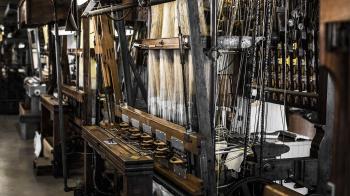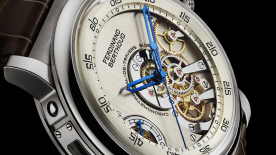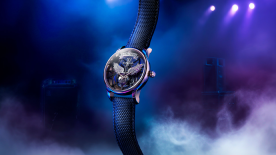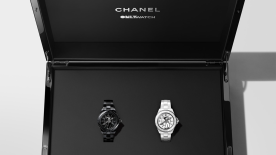The Nato: probably THE strap of recent years: simple, inexpensive, fun, and historic, it ticks all the boxes. It first appeared in the 1970s. Seeking a simple, inexpensive, sturdy strap, the British Ministry of Defence opened a call for tender for a G10 model – commonly known as the ‘Nato’ – largely based on the 1945 A.F. 0210.
To date the rebirth of the Nato, we need to dip into the world of Rolex vintage fans. In the late 2000s, the collectors’ world was smitten with Rolexmania; everybody wanted a vintage Submariner, but some of them no longer had their original strap. Collectors recalled seeing Goldfinger on TV, with Sean Connery wearing his Submariner on what they thought was a colourful Nato strap. Suddenly, everybody wanted one. Craftsmen brough the Nato strap back to life, in thousands of different combinations of colours and materials. It was only later that it all turned out to be a mistake: the Bond movie came out in 1964; the Nato strap did not appear until 1973. Rather than Nato strap, 007 was wearing a humble nylon one.
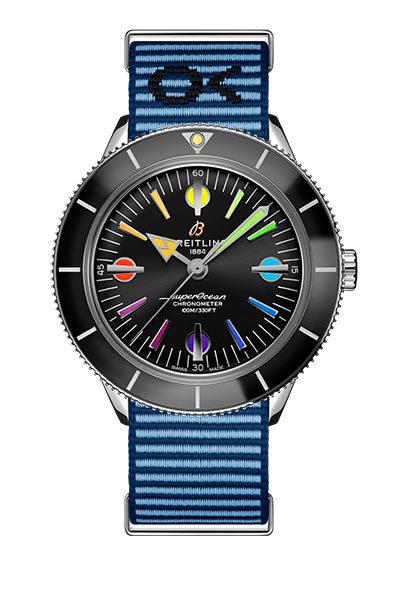
People turned out to prefer the myth to the reality, though: the Nato strap appeared on people’s wrists everywhere. In 2014, Omega gave the ‘Nato’ the ultimate accolade, fitting its Speedmaster Apollo 11 45th Anniversary watch with an olive-coloured NATO strap – a first for a major brand.

The woven strap: the strap Bond was wearing was indeed a simple, woven one. And in 2012, Tudor launched the now legendary Black Bay, a diving watch that drew inspiration from the brand’s illustrious aquatic history. The timepiece came with two straps, one of which was a new woven model featuring steel loops. It was an immediate success; woven by French craftsmen, the model became firmly established in Tudor’s collections.
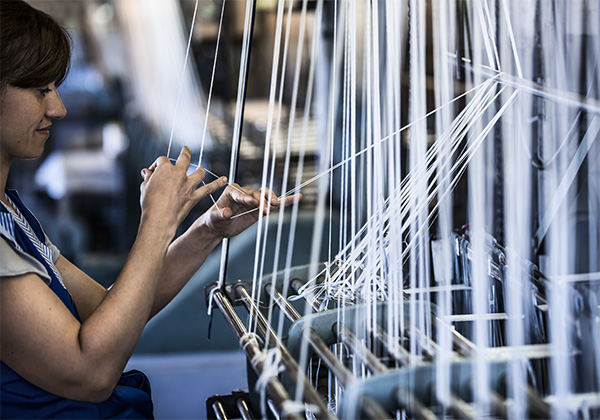
The MN (short for Marine Nationale): how did French combat divers wear their Tudors? On parachute straps, fed through the pins on their Submariners. In 2017, Erika – of Erika’s Originals fame – took up the theme and made an MN for her husband, who was also a collector. One of her straps even featured in a photo taken in the International Space Station (ISS) in 2018. More recently, Bell & Ross has been offering some of its vintage models on MNs.
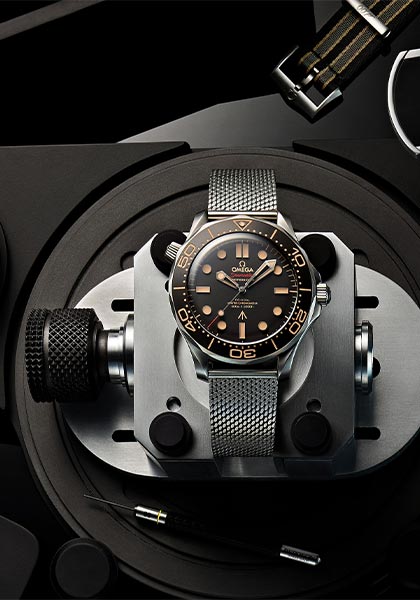
The Komfit: 2019 was the 50th anniversary year of the first moon landing; for many, the commemoration was exemplified by Omega and its Speedy. But let us not forget the Komfit strap by Forstner and JB Champion. Despite astronauts’ complaints that the quality was ‘mediocre’, and its rather weird appearance, it was chosen by NASA for its chronographs. Why choose a strap notorious for being fragile? For safety’s sake: if the watch were to get stuck during a manoeuvre, the Komfit was easy to break.
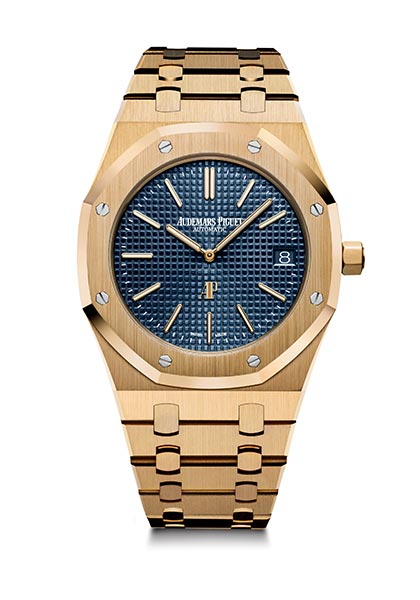
Bonklip: a few months ago, Joseph Bonnie, a small French firm, relaunched a metal bracelet. Despite its very Seventies-sounding name, the Bonklip actually dates back to 1920. Many see it as one of the first steel watch bracelets, used by prestigious brands such as Rolex.

The integrated bracelet: first invented by Rolex, watches with ‘integrated’ bracelets (ones that can’t be swapped out) gained classic status with the Royal Oak and the Nautilus, and have become stars in recent years. These watches, produced by great designers such as Gérald Genta, first came out in the 1970s. After quite some years in the wilderness, by 2020 they had achieved Holy Grail status. Every collector dreamed of slipping one on their wrist. Their role in this story is unique: they forge a link between the watch and what had previously been an interchangeable accessory. With them, the bracelet IS the watch, and vice versa.

More could be said: about mesh, reinterpreted by Omega for its new 2020 Seamaster Bond; Breitling’s very Eighties ‘Roller’ bracelet, relaunched a few months ago; the Tropic; the Isofrane, fitted on the first Omega Ploprofs; and Doxa’s ‘Beads of Rice’ bracelet. All of these have come back into fashion in recent years. And for the first time, they are available everywhere simultaneously. Supplying an exhaustive list would be, well, exhausting. Our brief journey through the wonderful world of straps /bracelets is drawing to a close. But we still have time for one last anecdote – and some unexpected recognition.
In the late 1970s, Swiss watchmaking was in crisis. Hope – and survival – took the form of a little plastic watch with an integrated strap made from the same material: a Simple Watch, now known as the Swatch. And in 2014, Apple launched a watch that turned the entire watchmaking industry upside down: the Apple Watch. By 2020, it had become the world’s best-selling timepiece. Naturally, Apple achieved this feat by dint of technology. But not just technology – its success is also due in part to the interchangeable wristbands, made from steel, fabric, or leather. Getting noticed in Cupertino is quite a feat. Many have dreamed of doing so. Straps and bracelets have actually managed it.
*On the occasion of GMT Magazine and WorldTempus' 20th anniversary, we have embarked on the ambitious project of summarising the last 20 years in watchmaking in The Millennium Watch Book, a big, beautifully laid out coffee table book. This article is an extract. The Millennium Watch Book is available on www.the-watch-book.com, in French and English, with a 10% discount if you use the following code: WT2021.
